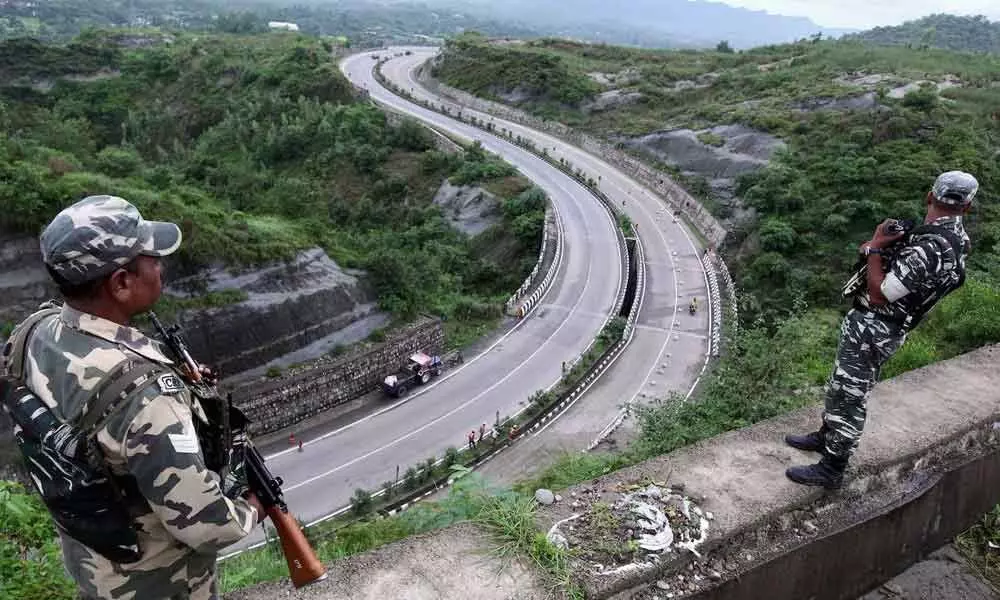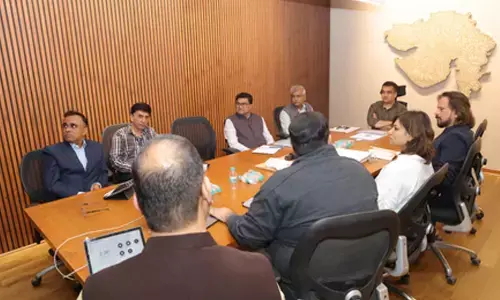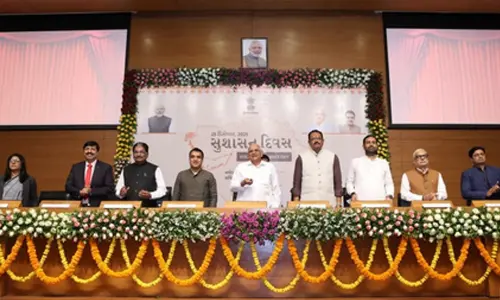The path to hill area development

The three sectors of the economy are agriculture, manufacturing and services.
The three sectors of the economy are agriculture, manufacturing and services. Manufacturing includes industries like paper, cement and car where physical goods are produced. Services includes sectors such as hotels, music, transport, health, beauticians, education, banks etc. where no physical goods are produced, and the consumer buys certain services.
The share of agriculture in our economy in 1951 was 56 percent, manufacturing 14 percent and services 30 percent. At present, the share of agriculture has reduced drastically from 56 percent to mere 15 percent. The share of manufacturing has increased from 14 percent to 30 percent; and the share of services has increased from 30 percent to 55 percent.
It is clear that the role of agriculture in our economy is declining rapidly while the share of manufacturing and services are gaining.
The reason for the decline in the share of agriculture is that the demand for agricultural goods in the global economy is limited while the production is increasing. The population is increasing only slowly. The demand for food crops is correspondingly increasing slowly.
Some increase is indeed taking place due to increased consumption of animal products such as eggs and meat. However, that is insufficient to compensate for the slow increase in population and the slow increase in demand for food generally. This effect is also neutralised by the adoption of vegetarianism by large numbers. Indeed, countries like Brazil are using sugarcane to manufacture petrol but the price of production is prohibitive for large scale manufacture.
Thus, the demand for agricultural goods is relatively muted and the share of agriculture in economies across the world is declining. On the other hand, the invention of new technologies like bore wells and chemical fertilizers have led to an increase in production. A stagnation in demand along with increase in production is leading to lower prices and lower share in the economy.
The situation of manufacturing is "stable." It is increasing along with the standard of living of the people. They are buying bikes and TVs. However, the demand does not increase beyond a point. The rich family who has already purchased a luxury car, fridge and TV simply does not buy more of manufactured goods. Thus, we find that the share of manufacturing in advanced countries like the United States has reduced and is around 20 percent at present.
In contrast the demand for services continues to ever increase. For example, one can travel abroad five times in a year or even opt for space travel. One can listen to new music every day and, if you want, you can ask a computer programmer to make a customised app to your requirements.
Thus, the consumption in the services sector has many possibilities and this sector continues to ever grow. For this reason, the share of agriculture is less than one percent, manufacturing is about 20 percent and services is about 80 percent in the advanced countries. We are moving in the same direction as seen in the decline of the share of agriculture and increase in the share of services since 1951.
The hill States have to decide which of these three sectors they will promote to rev up their economies. The limits to agriculture are self-evident. Further, the availability of land is limited and the undulating topography makes it difficult to use modern equipment like tractors and harvesters. Indeed, there is potential in specific crops like rose and gladiolus flowers and fruits like apples and cherries. Hill States should promote these high-value crops in mission mode.
The main issue is that of choosing between manufacturing- and services sectors. The hill areas are not fundamentally suitable for manufacturing. This becomes clear when we compare the location of, say, a paper factory in the hills or the plains. Establishment of such a factory in the hills would require transporting the raw material — eucalyptus trees, wheat straw and bagasse — from the plains; and transporting the manufactured material — paper — to the plains.
This two-way transport makes the established of such factories in the hills uneconomical. The size of cities in the hills is also smaller. This leads to less availability of necessary services. If, for example, an electric motor gets burnt, one can get a replacement in the plains in few hours while it will take days in the hills.
It is thus seen that the industries in the hill States are invariably located in the limited plains areas like Baddi in Himachal Pradesh, Kashipur in Uttarakhand and Jammu. One consequence of the establishment of industries in the plains areas is that migration takes place from the hills to the plains within the hill States.
For example, the youth from the hill district of Chamoli of Uttarakhand are migrating to the Palins district of Kashipur of Uttarakhand. This is leading to emptying of our hill areas and is additionally creating a security issue. Our army will have little information- and support base in a situation of conflict. For these reasons manufacturing is not likely to be successful in the hill areas of hill States.
The situation of the services sector is altogether different. For example, Switzerland has developed educational institutions and research centres in its hill areas. At one time a TB sanitorium had been established at Bhowali near Nainital.
The idea was that the patients would get well soon in those natural surroundings. Therefore, the hill States can succeed in attracting the services sectors. The beauty of the inhospitable terrain actually becomes a strength for these sectors. Airports can be established in the hill areas such as the helicopter service at Kedarnath.
The hill States have to decide whether they will use their rivers to produce electricity by establishing hydropower projects on their rivers; or they will attract the services sectors by allowing their rivers to flow freely.
The two sectors cannot go together. The free flow of the rivers will be affected adversely and discourage the coming of the services sectors if they make hydropower projects. Conversely, they will not be able to provide cheap electricity to the industries if they allow the rivers to flow freely. The hill States will, therefore, have to choose between manufacturing and services while promoting specific high-value crops in agriculture.
The services sector is more suitable for them because the need of electricity is about one-tenth of the manufacturing sector. They can import the small amount of electricity required for the services sector and the less generation of electricity from hydropower will not be a handicap for them.
The Hill States should revisit their efforts to generate hydropower in the light of the less demand of electricity in the services sector.
.(The writer is formerly Professor of Economics at IIM, Bengaluru)
















